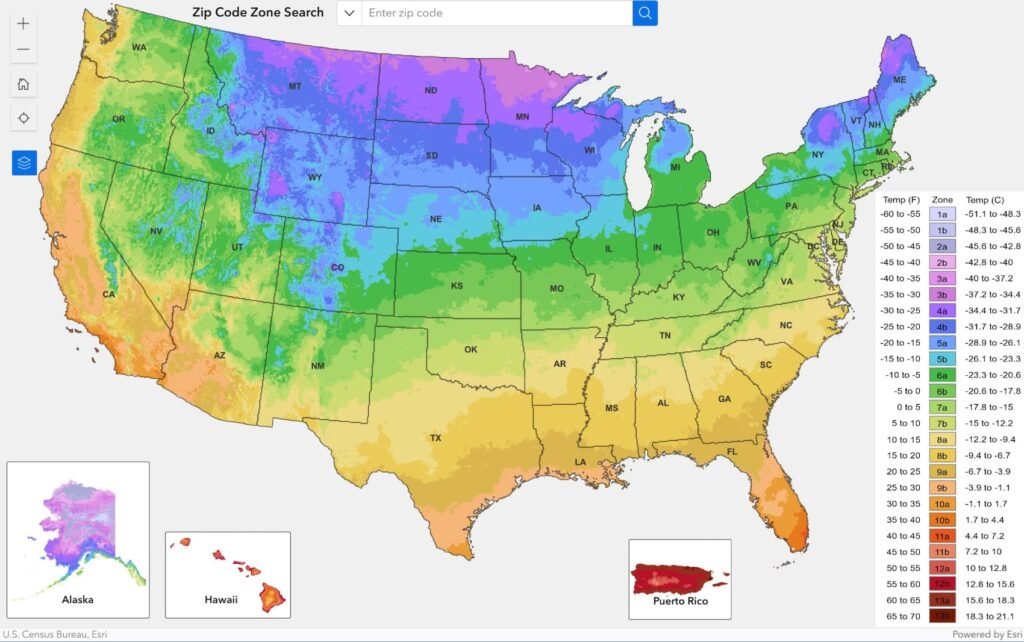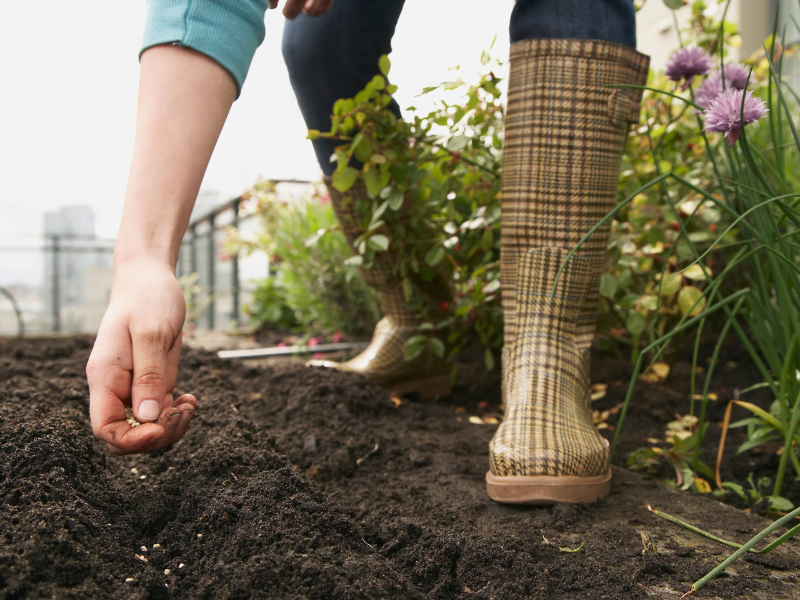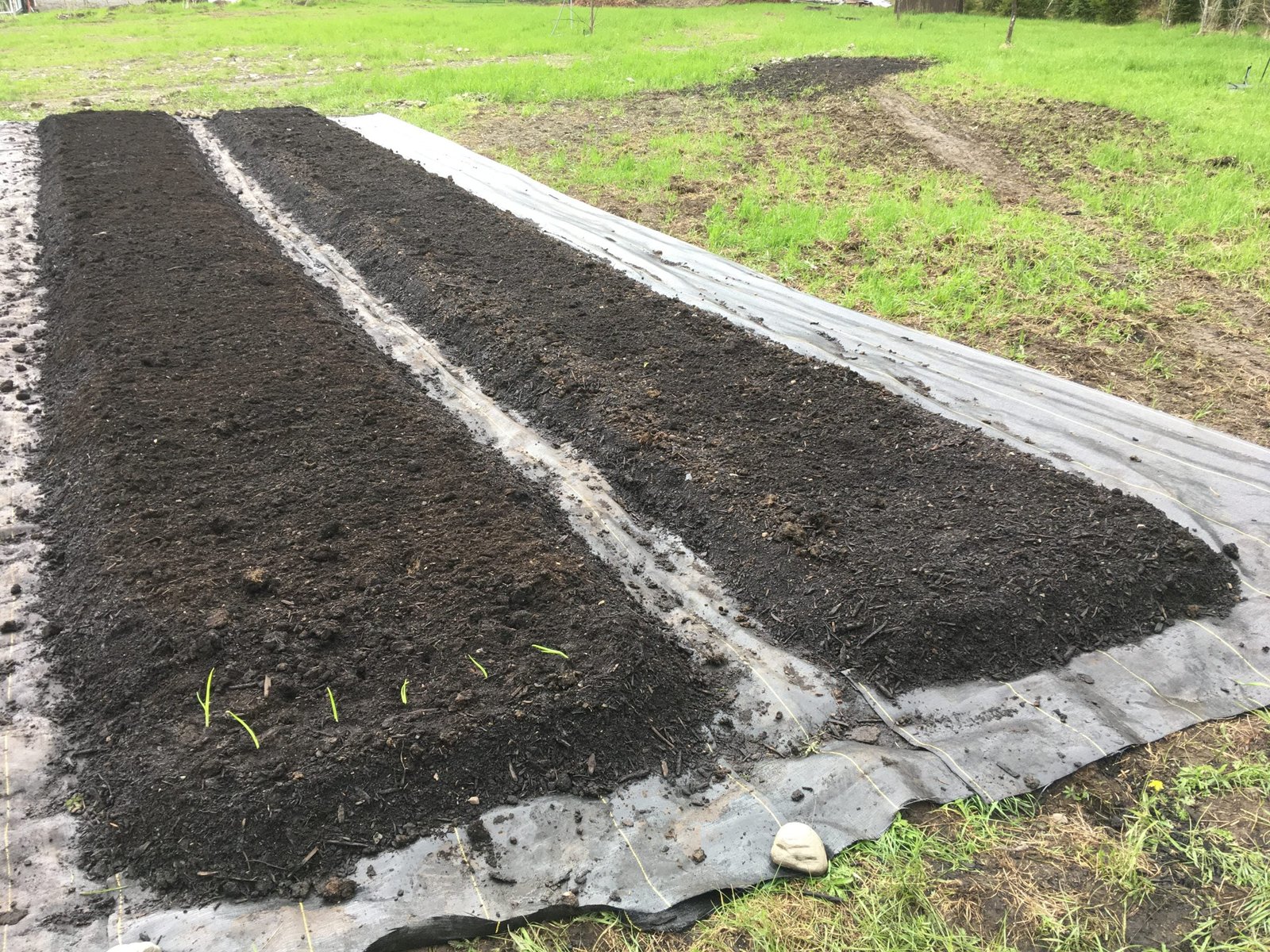Updated: February 5, 2025
Find out your area’s average first and last frost dates. Discover what growing zone you live in and about microclimates. Learn how these factors, especially frost dates, are important to know so you know when to start seeds and plant in your garden.
*In a hurry? Pin for later!

Frost Dates & Seed Starting
Knowing your last average frost dates for your area is super important!
The first frost date refers to the first average fall frost date in your area in the spring.
The last frost date refers to the last average frost date in your area in the fall.
When it comes to planting everything revolves around these dates. You’ll even know how many days you have in your growing season based on these dates.
If you’ve read any packages you’ll notice they refer to this average last frost date. It will say something along the lines of start indoors 6-8 weeks before the last average frost date. Another seed packet will instruct you to plant 2 weeks before the last average frost date. Or another seed package will say plant 2 week after the last average frost date.
Why do frost dates matter when gardening?

Here’s why frost dates matter when planting a garden.
Frost dates determine how long your growing season is and when it starts and ends.
If you start seeds too early for certain plants they will not be able to germinate as it’s too cold. Some seeds need light frost in order to germinate. Others are killed immediately by frost and the seeds will rot in the ground if planted too early. Some plants and seeds are tolerant of cold weather, while others are not tolerant to cold at all.
If you plant seeds too late, some will miss out on the frost needed to germinate. Others will not have a long enough growing season to reach maturity to be able to eat and enjoy.
Sounds complicated right? At first it can be, however the back of the seed packets direct you what to do in relation to the frost dates.
If that still sounds overwhelming, there are seed planting charts tailored for this. That help you know when to plant what. Check out my seed stating and direct sowing printable here.
How do I Find the frost dates for my area?

Simply use the Old Farmers Almanac and type in your area, they will give you your average first and last frost dates. If you live in a smaller city or town you may have to pick a larger city near you that has similar weather.
Click here to use the Old Farmers Almanac to search for your first and last average frost dates for your ares.
Keep in mind that these are the average frost dates for your area, this means they can and do vary from year to year. So it’s always good to keep an eye on the weather.
What is a growing zone and why are they important?

Plant hardiness zones are determined by the government of your country. They are similar to planting zones or growing zones grouped together in 1-13 with A and B for each zone number. Helping the gardener determine what kind of plants will grow well in their area, basically how “hardy” of a plant is.
Plant hardiness zones indicate the common average lows temperatures. Each zone is about 10 degrees warmer then the zone before it. The lower the number the cooler the zone, the longer and harder the winters are.
The sub categories A and B for each zone indicate the difference of 5 degrees, with A being the cooler of the two. For example, zone 5a or 5b. This 5 degrees can make a big difference for some plants!
Growing zones are helpful when knowing what plants would be a perennial or permanent plant for your zone. For example, fruit trees, other trees, shrubs, herbs. You may have seen on a package something like “perennial to zone 4” or which helps you know if you should plant this or if you feel it’s worth it to plant it every year.
How to find Plant Hardiness Zones
What growing zone am I in?
USDA Plant Hardiness Zone Map
To find out your own growing zone in the USA use this easy zone look up tool.
Otherwise United States plant hardiness zones are displayed on this map below.

Canada’s Plant Hardiness Zones Map
The Canadian plant hardiness zones are displayed on this map. You can also go to this website for a list of the major cities average frost dates.
To down load your own pdf go to the Canadian plant hardiness zones official website.

How Microclimates Impact Frost Dates
Keep in mind that your area may have a different microclimate compared which can impact your frost dates and weather slightly.
Some examples are these. If you live near a river that doesn’t freeze over, the water is holding heat and you may have a slightly earlier frost date in spring and a later one in the fall. If you live at higher elevation then you are more likely to experience colder weather.
Connect with your Local Gardening community

A gardening community can be invaluable for many reasons. A gardening community is great for building community in general, sharing gardening tips, sharing perennials, seed saving and trading and produce sharing too. Maybe one year your cucumbers go crazy, your neighbours I’m sure would be happy to help you out with them!
When figuring out your frost dates and microclimate the best is to ask local gardeners in your specific area. Find out what they’ve noticed over the years and usually do.
As an example, some local farmers in our area pointed out that they always get a fall frost about a week before the official fall first average frost date. However, they also noticed once that earlier frost happens it warms up and is good for almost another 3 weeks past the official fall average frost date.
This kind of information is super valuable for your own vegetable gardening.
Great places to meet local gardeners
- local farmers markets
- meeting neighbours and talking gardening
- local Facebook groups
Keep Gardening Notes

Experience means to try and experiment and try again. You will forget from year to year, so I highly recommend having a gardening notebook. Keep a few records and observations, make notes of when you got frosts, when you planted seeds and whatever else you notice and want to remember.
I like to make notes on the calendar I’m using that year and reference back the following year. Especially around those planting times and frost dates.
The best gardening saying is, “Next year will be better, right!?”. Providing there’s no surprise crazy weather of course. Growing up on the Canadian prairies I heard this a lot not only about gardening but crop farming too.
Plant some seeds and watch them grow. Don’t give up, it’s a lifelong learning process. But it truly is simple too.
Happy growing!
Go ahead & pin this to your gardening board for later!
What gardening zones have you gardened in? Have you noticed the impact of microclimates in your local area? I’d love to hear about it in the comments below!

Snag Your FREE Planting Guide!
Grab my comprehensive planting guide that’s based on your local average frost dates!
You will find a minimalist list of the seeds to start indoors as well as the crops that prefer to be planted directly into the soil. Included are plants that I don’t mention above like all of my favourite vegetables, herbs and flowers.
Shop This Post
This post contains affiliate links, which means I make a small commission at no extra cost to you. See my full disclosure here.
My Favourite Places to Order Seeds:
- Baker Creek Heirloom Seeds (USA)
- West Coast Seeds (Canada)









We definitely made the mistake of planting before a frost last year and had to re-plant our entire garden two weeks later.. ugh!
Thank you for sharing these tips and tricks!